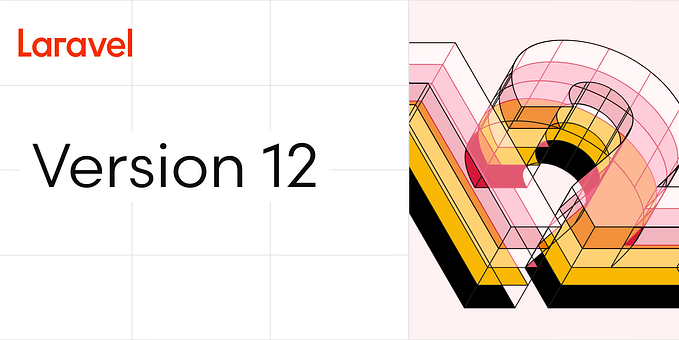Learn about the new “property hooks” feature added in PHP 8.4

Introduction
PHP 8.4 will be released in November 2024 and will be bringing a cool new feature: property hooks.
In this article, we’re going to take a look at what property hooks are and how you might use them in your PHP 8.4 projects.
As a side note, you might also be interested in checking out my other article which shows you the new array functions which are being added in PHP 8.4.
What are PHP Property Hooks?
You can check out the RFC for this feature at https://wiki.php.net/rfc/property-hooks
If you’re a Laravel developer, as you’re reading this article, you might notice that the hooks look very similar to accessors and mutators in Laravel models.
I quite like the look of the property hooks feature and I imagine it’s something I’ll be using in my projects when PHP 8.4 is released.
To understand how property hooks work, let’s take a look at some example usage.
The “get” Hook
You can define a get hook that will be called whenever you try to access a property.
For example, imagine you have a simple User class that accepts a firstName and lastName in the constructor. You might want to define a fullName property that concatenates the first and last names together. To do this, you could define a get hook for the fullName property:
readonly class User
{
public string $fullName {
get {
return $this->firstName.' '.$this->lastName;
}
}
public function __construct(
public readonly string $firstName,
public readonly string $lastName
) {
//
}
}
$user = new User(firstName: 'ash', lastName: 'allen');
echo $user->firstName; // ash
echo $user->lastName; // allen
echo $user->fullName; // ash allenIn the example above, we can see that we’ve defined a get hook for the fullName property that returns a value which is calculated by concatenating the firstName and lastName properties together. We can clean this up a little bit more by using a syntax similar to arrow functions too:
readonly class User
{
public string $fullName {
get => $this->firstName.' '.$this->lastName;
}
public function __construct(
public readonly string $firstName,
public readonly string $lastName,
) {
//
}
}
$user = new User(firstName: 'ash', lastName: 'allen');
echo $user->firstName; // ash
echo $user->lastName; // allen
echo $user->fullName; // ash allenType Compatibility
It’s important to note that the returned value from the getter has to be compatible with the type of the property.
If strict types aren’t enabled, the value will be type-juggled to the property type. For example, if you return an integer from a property that is declared as a string, the integer will be converted to a string:
declare(strict_types=1);
class User
{
public string $fullName {
get {
return 123;
}
}
public function __construct(
public readonly string $firstName,
public readonly string $lastName,
) {
//
}
}
$user = new User(firstName: 'ash', lastName: 'allen');
echo $user->fullName; // "123"In the above example, even though we’ve specified 123 as an integer to be returned, "123" is returned as a string because the property is a string.
We can add declare(strict_types=1); to the top of the code like so to enable strict type-checking:
declare(strict_types=1);
class User
{
public string $fullName {
get {
return 123;
}
}
public function __construct(
public readonly string $firstName,
public readonly string $lastName,
) {
//
}
}Now this would cause an error to be thrown because the return value is an integer, but the property is a string:
Fatal error: Uncaught TypeError: User::$fullName::get(): Return value must be of type string, int returnedThe “set” Hook
PHP 8.4 property hooks also allow you to define a set hook. This is called whenever you try to set a property.
You can choose between two separate syntaxes for the set hook:
- Explicitly defining the value to set on the property
- Using an arrow function to return the value to set on the property
Let’s look at both of these approaches. We’ll imagine we want to uppercase the first letters of the first and last name when they’re set on the User class:
declare(strict_types=1);
class User
{
public string $firstName {
// Explicitly set the property value
set(string $name) {
$this->firstName = ucfirst($name);
}
}
public string $lastName {
// Use an arrow function and return the value
// you want to set on the property
set(string $name) => ucfirst($name);
}
public function __construct(
string $firstName,
string $lastName
) {
$this->firstName = $firstName;
$this->lastName = $lastName;
}
}
$user = new User(firstName: 'ash', lastName: 'allen');
echo $user->firstName; // Ash
echo $user->lastName; // AllenAs we can see in the example above, we’ve defined a set hook for the firstName property that uppercases the first letter of the name before setting it on the property. We've also defined a set hook for the lastName property that uses an arrow function to return the value to set on the property.
Type Compatibility
If the property has a type declaration, then its set hook must have a compatible type set too. The following example will return an error because the set hook for firstName doesn't have a type declaration, but the property itself has a type declaration of string:
class User
{
public string $firstName {
set($name) => ucfirst($name);
}
public string $lastName {
set(string $name) => ucfirst($name);
}
public function __construct(
string $firstName,
string $lastName
) {
$this->firstName = $firstName;
$this->lastName = $lastName;
}
}Attempting to run the above code would result in the following error being thrown:
Fatal error: Type of parameter $name of hook User::$firstName::set must be compatible with property typeUsing “get” and “set” Hooks Together
You aren’t limited to using the get and set hooks separately. You can use them together in the same property.
Let’s take a simple example. We’ll imagine we have a fullName property on our User class. When we set the property, we'll split the full name into the first and last name. I know this is a naive approach and there are much better solutions, but it's purely for the sake of example to highlight the hooked properties.
The code may look something like so:
declare(strict_types=1);
class User
{
public string $fullName {
// Dynamically build up the full name from
// the first and last name
get => $this->firstName.' '.$this->lastName;
// Split the full name into first and last name and
// then set them on their respective properties
set(string $name) {
$splitName = explode(' ', $name);
$this->firstName = $splitName[0];
$this->lastName = $splitName[1];
}
}
public string $firstName {
set(string $name) => $this->firstName = ucfirst($name);
}
public string $lastName {
set(string $name) => $this->lastName = ucfirst($name);
}
public function __construct(string $fullName) {
$this->fullName = $fullName;
}
}
$user = new User(fullName: 'ash allen');
echo $user->firstName; // Ash
echo $user->lastName; // Allen
echo $user->fullName; // Ash AllenIn the code above, we’ve defined a fullName property that has both a get and set hook. The get hook returns the full name by concatenating the first and last name together. The set hook splits the full name into the first and last name and sets them on their respective properties.
You may have also noticed that we’re not setting a value on the fullName property itself. Instead, if we need to read the value of the fullName property, the get hook will be called to build up the full name from the first and last name properties. I've done this to highlight that you can have a property that doesn't have a value set directly on it, but instead, the value is calculated from other properties.
Using Property Hooks on Promoted Properties
A cool feature of property hooks is that you can also use them with constructor promoted properties.
Let’s check out an example of a class that isn’t using promoted properties and then look at what it might look like using promoted properties.
Our User class might look like so:
readonly class User
{
public string $fullName {
get => $this->firstName.' '.$this->lastName;
}
public string $firstName {
set(string $name) => ucfirst($name);
}
public string $lastName {
set(string $name) => ucfirst($name);
}
public function __construct(
string $firstName,
string $lastName,
) {
$this->firstName = $firstName;
$this->lastName = $lastName;
}
}We could promote the firstName and lastName properties into the constructor and define their set logic directly on the property:
readonly class User
{
public string $fullName {
get => $this->firstName.' '.$this->lastName;
}
public function __construct(
public string $firstName {
set (string $name) => ucfirst($name);
},
public string $lastName {
set (string $name) => ucfirst($name);
}
) {
//
}
}Write-only Hooked Properties
If you define a hooked property with a setter that doesn’t actually set a value on the property, then the property will be write-only. This means you can’t read the value of the property, you can only set it.
If we were to run the code above, we’d see the following error being thrown when attempting to access the fullName property:
declare(strict_types=1);
class User
{
public string $fullName {
// Define a setter that doesn't set a value
// on the "fullName" property. This will
// make it a write-only property.
set(string $name) {
$splitName = explode(' ', $name);
$this->firstName = $splitName[0];
$this->lastName = $splitName[1];
}
}
public string $firstName {
set(string $name) => $this->firstName = ucfirst($name);
}
public string $lastName {
set(string $name) => $this->lastName = ucfirst($name);
}
public function __construct(
string $fullName,
) {
$this->fullName = $fullName;
}
}
$user = new User('ash allen');
echo $user->fullName; // Will trigger an error!If we were to run the code above, we’d see the following error being thrown when attempting to access the fullName property:
Fatal error: Uncaught Error: Property User::$fullName is write-onlyRead-only Hooked Properties
Similarly, a property can be read-only.
For example, imagine we only ever want the fullName property to be generated from the firstName and lastName properties. We don't want to allow the fullName property to be set directly. We can achieve this by removing the set hook from the fullName property:
class User
{
public string $fullName {
get {
return $this->firstName.' '.$this->lastName;
}
}
public function __construct(
public readonly string $firstName,
public readonly string $lastName,
) {
$this->fullName = 'Invalid'; // Will trigger an error!
}
}If we were to try and run the code above, the following error would be thrown because we’re trying to set the fullName property directly:
Uncaught Error: Property User::$fullName is read-onlyUsing the “readonly” keyword
You can still make our PHP classes readonly even if they have hooked properties. For example, we may want to make the User class readonly:
readonly class User
{
public string $firstName {
set(string $name) => ucfirst($name);
}
public string $lastName {
set(string $name) => ucfirst($name);
}
public function __construct(
string $firstName,
string $lastName,
) {
$this->firstName = $firstName;
$this->lastName = $lastName;
}
}However, a hooked property cannot use the readonly keyword directly. For example, this class would be invalid:
class User
{
public readonly string $fullName {
get => $this->firstName.' '.$this->lastName;
}
public function __construct(
string $firstName,
string $lastName,
) {
$this->firstName = $firstName;
$this->lastName = $lastName;
}
}The above code would throw the following error:
Fatal error: Hooked properties cannot be readonlyThe “__PROPERTY__” Magic Constant
In PHP 8.4, a new magic constant called __PROPERTY__ has been introduced. This constant can be used to reference the property name within the property hook.
Let’s take a look at an example:
class User
{
// ...
public string $lastName {
set(string $name) {
echo __PROPERTY__; // lastName
$this->{__PROPERTY__} = ucfirst($name); // Will trigger an error!
}
}
public function __construct(
string $firstName,
string $lastName,
) {
$this->firstName = $firstName;
$this->lastName = $lastName;
}
}In the code above, we can see that using __PROPERTY__ inside the lastName property's setter will output the property name lastName. However, it's also worth noting that trying to use this constant in an attempt to set the property value will trigger an error:
Fatal error: Uncaught Error: Must not write to virtual property User::$lastNameThere’s a handy use case example for the __PROPERTY__ magic constant that you can check out on GitHub: https://github.com/Crell/php-rfcs/blob/master/property-hooks/examples.md.
Hooked Properties in Interfaces
PHP 8.4 also allows you to define publicly accessible hooked properties in interfaces. This can be useful if you want to enforce that a class implements certain properties with hooks.
Let’s take a look at an example interface with hooked properties declared:
interface Nameable
{
// Expects a public gettable 'fullName' property
public string $fullName { get; }
// Expects a public gettable 'firstName' property
public string $firstName { get; }
// Expects a public settable 'lastName' property
public string $lastName { set; }
}In the interface above, we’re defining that any classes implementing the Nameable interface must have:
- A
fullNameproperty that is at least publicly gettable. This can be achieved by defining agethook or not defining a hook at all. - A
firstNameproperty that is at least publicly gettable. - A
lastNameproperty that is at least publicly settable. This can be achieved by defining a property which has asethook or not defining a hook at all. But if the class is read-only then the property must have asethook.
This class that implements the Nameable interface would be valid:
class User implements Nameable
{
public string $fullName {
get => $this->firstName.' '.$this->lastName;
}
public string $firstName {
set(string $name) => ucfirst($name);
}
public string $lastName;
public function __construct(
string $firstName,
string $lastName,
) {
$this->firstName = $firstName;
$this->lastName = $lastName;
}
}The class above would be valid because the fullName property has a get hook to match the interface definition. The firstName property only has a set hook, but is still publicly accessible so it satisfies the criteria. The lastName property doesn't have a get hook, but it is publicly settable so it satisfies the criteria.
Let’s update our User class to enforce a get and set hook for the fullName property:
interface Nameable
{
public string $fullName { get; set; }
public string $firstName { get; }
public string $lastName { set; }
}Our User class would no longer satisfy the criteria for the fullName property because it doesn't have a set hook defined. It would cause the following error to be thrown:
Fatal error: Class User contains 1 abstract methods and must therefore be declared abstract or implement the remaining methods (Nameable::$fullName::set)Hooked Properties in Abstract Classes
Similar to interfaces, you can also define hooked properties in abstract classes. This can be useful if you want to provide a base class that defines hooked properties that child classes must implement. You can also define the hooks in the abstract class and have them be overridden in the child classes.
For example, let’s make a Model abstract class that defines a name property that must be implemented by child classes:
abstract class Model
{
abstract public string $fullName {
get => $this->firstName.' '.$this->lastName;
set;
}
abstract public string $firstName { get; }
abstract public string $lastName { set; }
}In the abstract class above, we’re defining that any classes that extend the Model class must have:
- A
fullNameproperty that is at least publicly gettable and settable. This can be achieved by defining agetandsethook or not defining a hook at all. We've also defined thegethook for thefullNameproperty in the abstract class so we don't need to define it in the child classes, but it can be overridden if needed. - A
firstNameproperty that is at least publicly gettable. This can be achieved by defining agethook or not defining a hook at all. - A
lastNameproperty that is at least publicly settable. This can be achieved by defining a property which has asethook or not defining a hook at all. But if the class is read-only then the property must have asethook.
We could then create a User class that extends the Model class:
class User extends Model
{
public string $fullName;
public string $firstName {
set(string $name) => ucfirst($name);
}
public string $lastName;
public function __construct(
string $firstName,
string $lastName,
) {
$this->firstName = $firstName;
$this->lastName = $lastName;
}
}Conclusion
Hopefully, this article should have given you an insight into how PHP 8.4 property hooks work and how you might be able to use them in your PHP projects.
I wouldn’t worry too much if this feature seems a little confusing at first. When I first saw it, I was a little confused too (especially with how they work with interfaces and abstract classes). But once you start tinkering with them, you’ll soon get the hang of it.
I’m excited to see how this feature will be used in the wild and I’m looking forward to using it in my projects when PHP 8.4 is released.
If you enjoyed reading this post, you might be interested in checking out my 220+ page ebook “ Battle Ready Laravel” which covers similar topics in more depth.
Or, you might want to check out my other 440+ page ebook “ Consuming APIs in Laravel” which teaches you how to use Laravel to consume APIs from other services.
If you’re interested in getting updated each time I publish a new post, feel free to sign up for my newsletter.
Keep on building awesome stuff! 🚀
Originally published at https://ashallendesign.co.uk.










